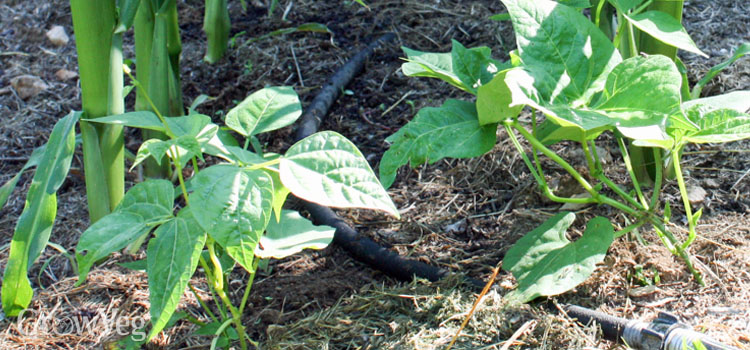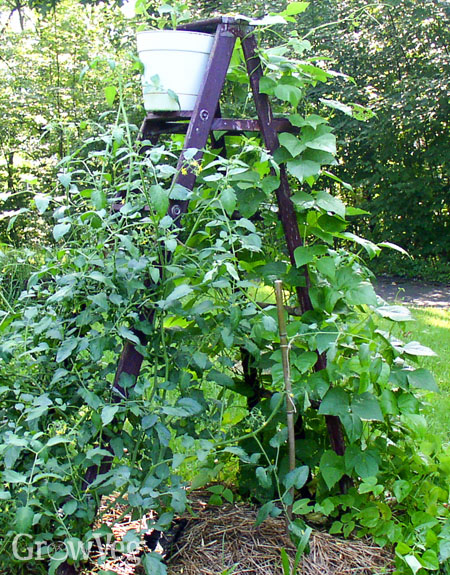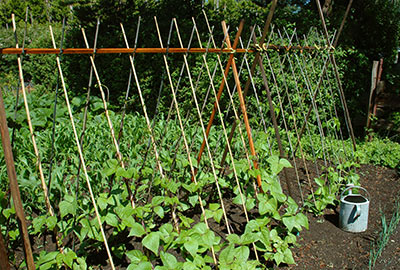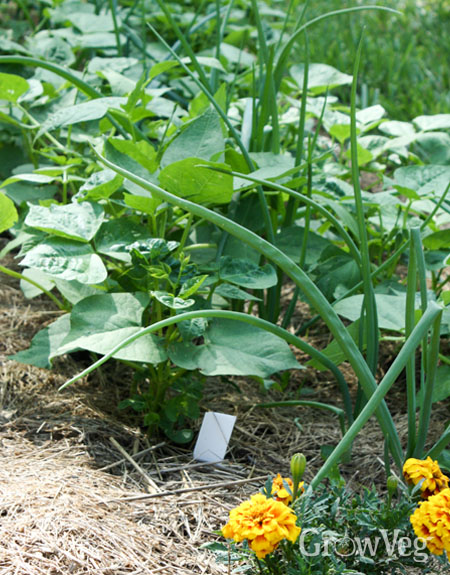The Ultimate Guide To Companion Planting For Pole Beans
The Ultimate Guide to Companion Planting for Pole Beans
Pole beans are a versatile and delicious vegetable that can be grown in many different climates. They are also relatively easy to care for, making them a good choice for beginner gardeners.
One way to improve the growth and yield of your pole beans is to plant them with companion plants. Companion planting is the practice of planting different types of plants together in a way that benefits each other. There are many different companion plants that can be beneficial for pole beans, including:
- Carrots: Carrots help to suppress the growth of root-knot nematodes, which can be a major pest of pole beans.
- Celery: Celery attracts beneficial insects, such as ladybugs and lacewings, which help to control pests.
- Cucumbers: Cucumbers help to shade the soil around pole beans, which can help to prevent weeds and retain moisture.
- Eggplant: Eggplant helps to repel aphids, which are a common pest of pole beans.
- Peas: Peas are legumes, just like pole beans, and they help to fix nitrogen in the soil. This nitrogen can then be used by the pole beans, which can help to improve their growth and yield.
- Potatoes: Potatoes help to suppress the growth of potato beetles, which can be a major pest of pole beans.
- Radishes: Radishes help to improve the drainage around pole beans, which can help to prevent root rot.
- Strawberries: Strawberries help to attract beneficial insects, such as bees and butterflies, which help to pollinate the pole beans.
- Swiss chard: Swiss chard helps to suppress the growth of weeds, which can compete with pole beans for nutrients and water.
In addition to these specific companion plants, there are a few general principles that can be followed when companion planting pole beans. For example, it is a good idea to plant pole beans with plants that have similar sun and water requirements. It is also a good idea to avoid planting pole beans with plants that are susceptible to the same pests or diseases.
By following these tips, you can use companion planting to improve the growth and yield of your pole beans. This will help you to enjoy a bountiful harvest of this delicious vegetable.
[MAIN CONTENT]
Here are some additional tips for companion planting pole beans:
- Plant pole beans with tall plants that can provide them with support, such as corn or sunflowers.
- Plant pole beans with plants that attract beneficial insects, such as marigolds, nasturtiums, and yarrow.
- Plant pole beans with plants that have deep roots, such as carrots and potatoes. This will help to prevent the beans from competing for water and nutrients.
- Avoid planting pole beans with plants that are susceptible to the same pests or diseases, such as tomatoes, peppers, and eggplants.
Here are some of the benefits of companion planting pole beans:
- Increased crop yields: Companion planting can help to increase the yield of pole beans by up to 30%.
- Improved plant health: Companion planting can help to improve the overall health of pole beans by deterring pests and diseases.
- Reduced need for fertilizers and pesticides: Companion planting can help to reduce the need for fertilizers and pesticides, which can save you money and protect the environment.
- Increased biodiversity: Companion planting can help to increase the biodiversity of your garden, which can make it more attractive to beneficial insects and wildlife.
[CONCLUSION]
Companion planting is a simple and effective way to improve the growth and yield of your pole beans. By following the tips in this guide, you can create a healthy and productive garden that will provide you with a bountiful harvest of this delicious vegetable.
Pole beans are a delicious and versatile vegetable that can be grown in most gardens. But did you know that companion planting can help you improve your pole bean harvest? Companion planting is the practice of planting certain plants together to benefit each other. For example, pole beans can benefit from being planted near corn, which provides them with support and shade. They can also benefit from being planted near marigolds, which help to repel pests.
If you're interested in learning more about companion planting for pole beans, I recommend visiting Gardenia Inspiration. This website has a wealth of information on the topic, including a list of recommended companion plants, tips on how to plant them together, and information on the benefits of companion planting.
FAQ of companion planting for pole beans
- What are the best companion plants for pole beans?
Some of the best companion plants for pole beans include:
* Carrots: Pole beans fix nitrogen in the soil, which carrots need to thrive.
* Celery: Both pole beans and celery need full sun, so they can grow well together.
* Chard: Chard provides shade for the roots of pole beans, which helps to prevent them from rotting.
* Corn: Corn provides a sturdy trellis for pole beans to climb, and the two plants can help each other to deter pests.
* Cucumber: Cucumbers and pole beans have similar growing requirements, and they can help each other to suppress weeds.
- What are some bad companion plants for pole beans?
Some plants that should not be planted near pole beans include:
* Beetroot: Pole beans and beetroot can stunt each other's growth.
* Chives: Chives can repel beneficial insects that are helpful to pole beans.
* Garlic: Garlic can repel beneficial insects that are helpful to pole beans.
* Leek: Leek can repel beneficial insects that are helpful to pole beans.
* Onion: Onion can repel beneficial insects that are helpful to pole beans.
- How do companion plants benefit pole beans?
Companion plants can benefit pole beans in a number of ways, including:
* Attracting beneficial insects: Some companion plants, such as basil, nasturtiums, and marigolds, attract beneficial insects that prey on pests that can damage pole beans.
* Suppressing weeds: Some companion plants, such as cucumbers and squash, can help to suppress weeds that compete with pole beans for water and nutrients.
* Providing shade: Some companion plants, such as chard and corn, can provide shade for the roots of pole beans, which helps to prevent them from rotting.
* Fixing nitrogen: Some companion plants, such as peas and beans, fix nitrogen in the soil, which can be used by pole beans to grow.
- How far apart should pole beans be planted?
Pole beans should be planted about 12-18 inches apart. This will give them enough space to grow and spread out.
Image of companion planting for pole beans
Here are 5 different images of companion planting for pole beans from Pinterest:
- Pole beans and corn. Corn provides support for the pole beans to climb, and the pole beans help to suppress weeds around the corn plants.

- Pole beans and tomatoes. Both pole beans and tomatoes are heavy feeders, so they can benefit from being planted together. The pole beans help to shade the soil around the tomatoes, which can help to prevent diseases.

- Pole beans and carrots. Pole beans help to deter carrot flies, which are a common pest of carrots. The carrots also help to improve the soil drainage for the pole beans.

- Pole beans and cucumbers. Pole beans and cucumbers both prefer full sun and well-drained soil. They can also help to shade each other, which can help to prevent diseases.

- Pole beans and marigolds. Marigolds help to repel pests such as aphids, beetles, and whiteflies, which can all be a problem for pole beans.

Post a Comment for "The Ultimate Guide To Companion Planting For Pole Beans"